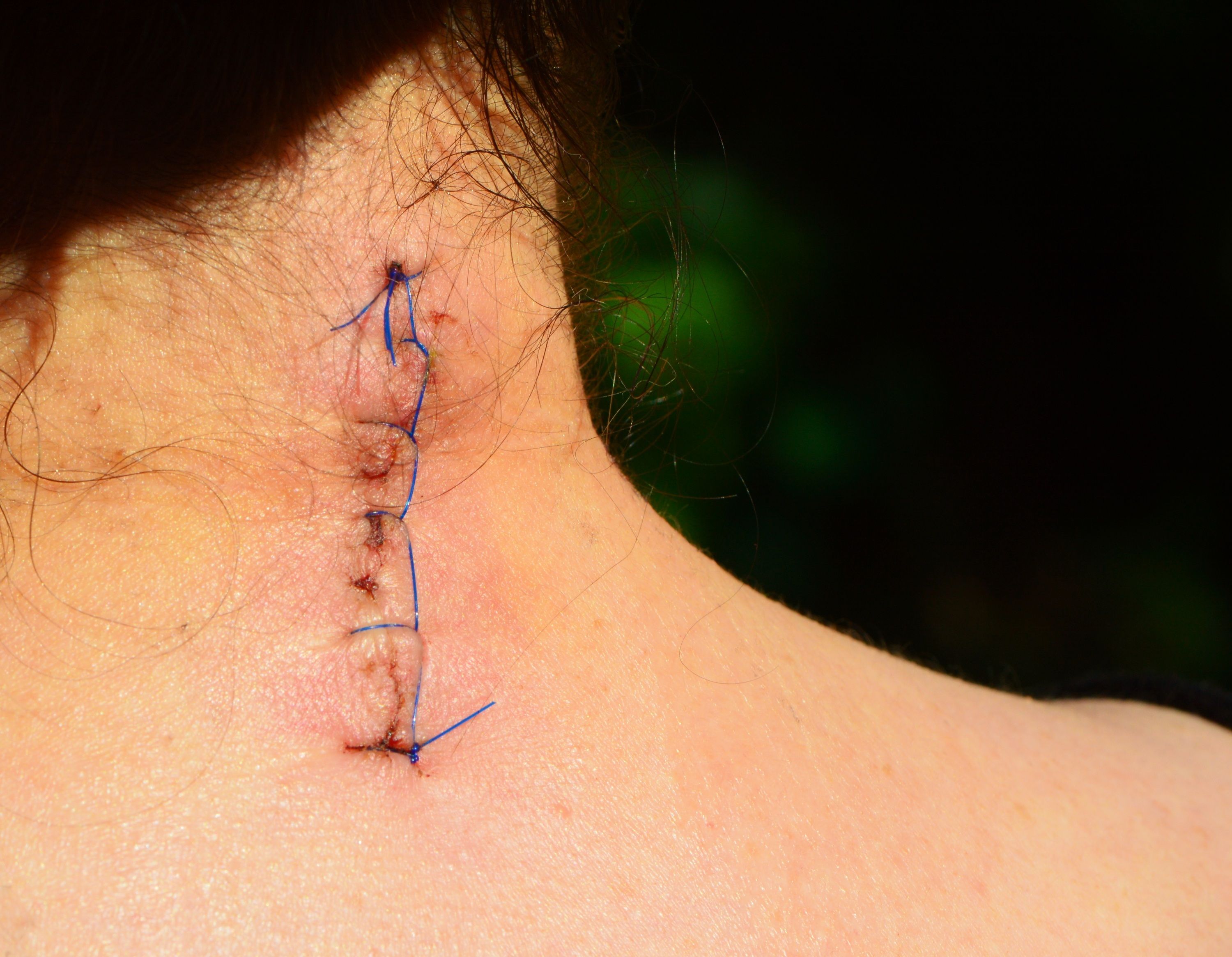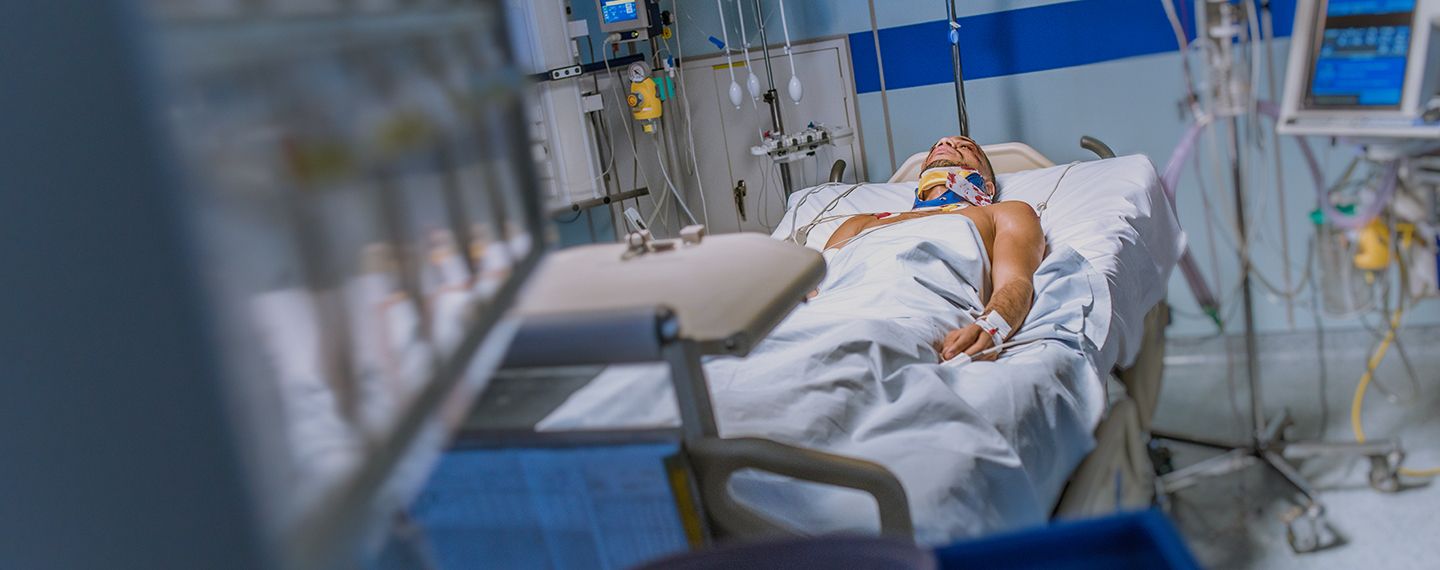Spinal fusion surgery is often marketed as a permanent solution for chronic neck and back pain by fusing two or more vertebrae to eliminate painful movement and improve spinal alignment. The surgical approach needed to reach the spine can cause unavoidable damage to the intricate network of muscles, ligaments, tendons, and joints that support it. While many present it as a life-changing procedure, it should also be recognized as an invasive operation with a less discussed but significant drawback: collateral damage to surrounding tissues, which can result in long-term complications.
In this post, I will examine the types of collateral damage associated with spinal fusion and their long-term impact on mobility, pain, and quality of life. I will also introduce you to my innovative Deuk Laser Disc Repair (DLDR)– the best way to avoid spinal fusion surgery.
The Unavoidable Path: Muscle Damage
To reach the vertebrae, a surgeon must navigate through layers of powerful back muscles. These muscles, known as the paraspinal muscles, play a crucial role in maintaining posture, stability, and mobility. The surgical approach, whether from the back (posterior), front (anterior), or side (lateral), requires these muscles to be cut, stripped, or retracted.
Types of Muscle Damage
- Muscle Retraction: During posterior fusion, surgeons use retractors to pull the paraspinal muscles away from the spine. This prolonged retraction can reduce blood flow to the muscle tissue, leading to ischemia (a lack of oxygen). This oxygen deprivation can cause muscle cells to die, a condition known as muscle atrophy. The atrophied muscle is often replaced by fatty tissue, which is weaker and less functional.
- Denervation: The nerves that control these muscles (the dorsal rami) are tiny and delicate. During the dissection and retraction process, these nerves can be stretched, bruised, or even severed. This damage, called denervation, disrupts the communication between the brain and the muscle, leading to further atrophy and weakness.
- Latrogenic Injury: Iatrogenic refers to injury caused by medical treatment. In this context, it includes direct cutting or tearing of muscle fibers during the surgical dissection.
Effects of Muscle Damage
The impact of this muscle damage is significant. Weakened paraspinal muscles can lead to a condition known as "flatback syndrome," where the natural curve of the lower back is lost. This forces patients to compensate by flexing their hips and knees to stand upright, which is fatiguing and can cause pain in other joints. Furthermore, the loss of muscle mass reduces the spine's dynamic stability, placing more stress on the fused segments and adjacent vertebrae.
Stretching the Limits: Ligament and Tendon Damage
Ligaments are the tough, fibrous bands that connect bones, while tendons connect muscles to bones. Together, they form a crucial support system for the spine, limiting excessive motion and maintaining alignment. Spinal fusion surgery can compromise this vital network.
How Ligaments and Tendons Are Affected
Ligament Removal: To access the spinal canal and prepare the vertebrae for fusion, surgeons must often remove or cut key ligaments, such as the supraspinous and interspinous ligaments, the ligament flavum, and the foraminal ligament. While this is a necessary step, the removal of these stabilizing structures can have consequences.
Tendon Damage: The points where tendons attach to the bone (enthesis) can be disrupted when muscles are stripped from the vertebrae. This damage can lead to chronic inflammation and pain, similar to tendonitis.
The Consequences for Stability
Removing ligaments weakens the posterior tension band of the spine, a system that helps resist forward bending. This loss can contribute to spinal instability above and below the fused level. Without these ligamentous checks, the adjacent segments are forced to handle increased loads and movements, accelerating their wear and tear. This is a primary factor in the development of Adjacent Segment Disease (ASD), a common long-term complication where the vertebrae next to the fusion break down, and a host of spinal deformities.
Joint Integrity: Facet Joints and Capsules
The facet joints are small, cartilage-lined joints located on the back of the spine that guide and limit spinal motion. Each facet joint is surrounded by a fibrous joint capsule, which provides stability and contains synovial fluid for lubrication and movement.
Surgical Impact on Facet Joints
During a posterior spinal fusion, the facet joints at the fusion level are intentionally destroyed. The cartilage is scraped away to expose the underlying bone, and bone graft material is packed into the joint to promote solid fusion. This is a key part of the fusion process itself. However, the facet joints above and below the fusion levels are also at risk.
- Capsule Disruption: The dissection process can inadvertently damage the capsules of adjacent facet joints. A torn or weakened joint capsule can lead to instability at that level, causing pain and accelerating the progression of arthritic changes.
- Increased Mechanical Stress: Once a spinal segment is fused, it no longer moves. This immobility forces the neighboring segments to absorb extra motion and stress. The facet joints in these adjacent segments are subjected to higher loads, which can wear down their cartilage and lead to arthritis, pain, and stiffness.
Damage to the facet joints and their capsules is a major contributor to post-surgical pain and Adjacent Segment Disease. Patients may trade one level of pain for another. The development of arthritis in these joints can lead to stiffness, reduced mobility, and the need for further medical intervention, including additional surgery.

On the Surface: Skin and Scar Tissue
On the Surface: Skin and Scar Tissue
The most noticeable collateral damage is the incision itself. While a scar is a common outcome of any surgery, its effects go beyond just appearance. For most people, the surgical scar is a minor concern. However, in some cases, thick, adherent scar tissue can limit movement and cause feelings of stiffness. Numbness or altered sensation can also persist, serving as a reminder of the surgery and a source of chronic discomfort.
Scar Tissue Formation: The body heals by forming scar tissue, which is less flexible than normal tissue. A long incision, standard in multi-level fusions, can create a large area of restrictive scar tissue that sticks to the underlying muscle and fascia. This can limit the skin's mobility and sometimes cause a sensation of tightness or discomfort when the skin is pulled.
Cutaneous nerve damage: Small nerves that send sensation to the skin are inevitably cut during the incision. This can cause numbness, tingling, or hypersensitivity around the scar. Although often temporary, these sensory changes can sometimes be permanent and cause significant discomfort for patients.
Secondary Deformities: When Damage Causes Spinal Misalignment
Collateral damage from spinal fusion doesn’t only affect muscles, ligaments, and joints—it can also result in severe spinal deformities. Disrupting the fragile balance of the back’s supporting structures can cause the spine to lose its proper alignment gradually. Common deformities that may develop or worsen after spinal fusion include:
- Scoliosis: Scoliosis refers to a sideways curve of the spine that can occur when muscle weakness or uneven scar tissue causes the spine to become misaligned. If fusion destabilizes the spine above or below the operated segment—or if muscle atrophy weakens only one side—this imbalance can gradually cause the spine to bend out of alignment. Progressive scoliosis may cause uneven shoulders or hips, back pain, and difficulty maintaining good posture.
- Lordosis and Flatback Syndrome: The spine typically curves gently inward in the lower back, a condition known as lordosis. If the supporting muscles and ligaments are damaged or scar tissue limits movement, the lumbar curve may flatten, leading to what is known as flatback syndrome. On the other hand, improper fusion technique or an imbalance of forces may increase this curve, resulting in hyperlordosis. Both distortions make it hard to stand upright comfortably, often causing patients to bend their knees or hips to compensate.
- Kyphosis:Kyphosis involves excessive forward rounding of the upper back. This can result from destabilization of the vertebral segments, poor bone healing, or tension imbalances caused by muscle and ligament damage. Over time, kyphosis can make it nearly impossible to stand upright and may also lead to breathing difficulties, pain, and noticeable changes in posture.
- Spondylolisthesis: Spondylolisthesis is a condition where one vertebra slips out of place over another. When ligaments and facet joints are damaged during or after fusion, the integrity of the spinal column can be compromised, increasing the risk that a vertebra may shift out of position. This misalignment can lead to nerve impingement, severe lower back or leg pain, numbness, and difficulty walking.
The Better Way: Deuk Laser Disc Repair (DLDR)
For patients suffering from debilitating pain or severe instability, the benefits of spinal surgery might seem to outweigh the risks significantly. However, as you can see, they are not procedures without consequences. There is one procedure that has none of these consequences. My revolutionary procedure, Deuk Laser Disc Repair (DLDR), offers a safer way to alleviate neck or back pain without risk of collateral damage, as it avoids the muscles, nerves, ligaments, tendons, and joints.
A Game-Changing Procedure
DLDR is a minimally invasive form of endoscopic spine surgery performed in a modern surgery center under sedation, allowing patients to relax during the procedure. The procedure is done endoscopically using a high-definition camera inserted through a tiny 4mm incision to view the injured area. DLDR uses a precision laser to vaporize the herniated tissue. Fascia, muscles, ligaments, or bone are not damaged or removed. Fusions and artificial discs are not necessary. After surgery, patients wake up to immediate relief and a surgical scar so small that the surgeon can cover it with a Band-Aid.
Watch Deuk Laser Disc Repair in Action
Our goal is to be completely transparent about our process and procedures for treating back issues. We livestream surgeries with our patients’ written consent, allowing you to observe our technique.
Make the First Move to Move Pain-Free
Upload your latest MRI for a complimentary review and consultation with me, Dr. Ara Deukmedjian, M.D., founder of Deuk Spine Institute and creator of the procedure. Our team will reach out to you to help you regain your life.
